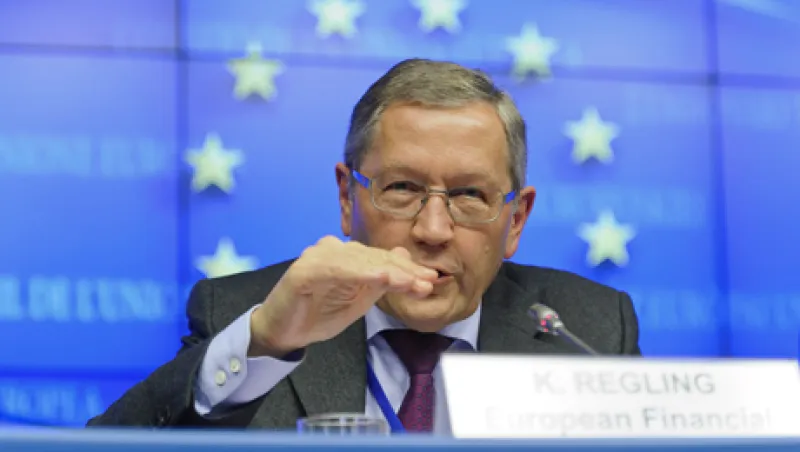European Union officials sought to portray an upbeat picture of a euro area finally getting to grips with its debt problems at the annual meetings of the International Monetary Fund and the World Bank in Tokyo over the weekend.
One big reason for the relative optimism is the European Stability Mechanism, the bloc’s permanent bailout facility, which was launched last week and received the first €32 billion ($41.8 billion) in capital from EU member states. The ESM is “an essential step” in providing the EU with the institutional framework needed to resolve the debt crisis, Klaus Regling, the agency’s managing director, said in an interview in Tokyo. “There’s never one miracle step that solves everything. But we have come a long way.”
A longtime German and EU finance official, Regling previously ran the European Financial Stability Facility, a €200 billion vehicle that is financing debt restructuring programs in Greece, Ireland and Portugal. Unlike the EFSF, which depends on guarantees from EU member states and has seen its creditworthiness questioned as the bloc’s crisis worsened, the ESM operates with paid-in capital that should ensure its triple-A rating.
Many investors and analysts believe Spain needs to tap the ESM as part of an EU debt restructuring program, and they expressed frustration at the IMF meeting that Madrid has so far resisted such a move. The European Central Bank requires countries to seek an EU program before it will buy their debt under its new Outright Monetary Transactions program.
Regling insisted it’s not a foregone conclusion that Spain will have to request an EU program and draw on the ESM. Recent declines in interest rates, triggered by the announcement of the OMT in September, have made it much easier for Spain and Italy to finance their deficits, he noted.
“One can create instruments and not use them and they can still be useful,” he said. “The test in the end is the market. Interest rates have come down for Spain and for Italy.”
If Spain and Italy do end up requesting bailouts, Regling was confident that the ESM has enough firepower to handle the job, a point on which many analysts are skeptical. The mechanism has already committed to financing the recapitalization of Spain’s banks, which officials expect to cost at least €50 billion. The ESM’s remaining lending capacity of €450 billion equals roughly one year of borrowing needs for Spain and Italy combined. But Regling explained that the ESM will intervene tactically, most likely in the primary market, in an effort to keep down borrowing costs, while the ECB can buy short-term bonds in the secondary market.
“Nobody has the intention of taking Spain and Italy completely off the market like we did with Ireland, Portugal and Greece,” he said. If Spain or Italy did request ESM assistance, he added, “it would most likely be a precautionary arrangement where sometimes we would step in.”
The Europeans continued to receive plenty of advice and pressure in Tokyo, including from the IMF’s managing director, Christine Lagarde, who said the EU needed to take faster, bolder action to contain the debt crisis. But Regling called the criticism outdated. Decision-making takes time in a bloc of 17 countries, he acknowledged, but EU has made major progress with the ESM and the announcement of the ECB’s bond-buying program and governments remained committed to doing whatever was necessary to keep the single currency intact.
“When a new problem comes up that either costs money or means the budget has to accept risks, then there has to be a national debate in each country between government, parliament, the media, the general public,” he said. “What one should not forget is that after every controversial debate we have had over the past two to three years, each time there was a consensus in the end.”
He also insisted that the EU’s prescription of fiscal austerity and structural economic reforms were working in peripheral countries, including Greece, where wages have fallen by 20 percent and exports have begun to rebound. The IMF cast doubt on the austerity strategy in its World Economic Outlook, stating that budget cutbacks in Europe were having a bigger negative impact on growth than previously estimated, but European officials, including German Finance Minister Wolfgang Schäuble, insisted that the bloc would stick to its current fiscal course.
“There will be a turning point once competitiveness is restored,” Regling said. “And we see clear early signs of that already because exports are growing in these countries, which was not the case until two years ago. So they are rebalancing their economies. Current account deficits are coming down.”






